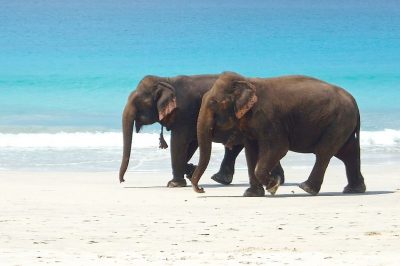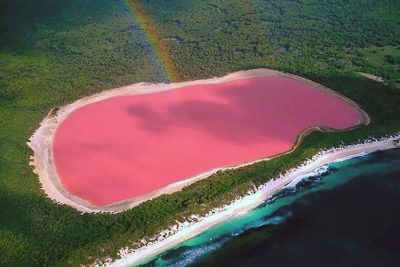Playa de Gulpiyuri: The Tiny Beach in the Principality of Asturias in Spain
Share

Playa de Gulpiyuri beach. (Franciaio / Wikimedia Commons)
There are many extraordinary natural wonders in the world, many of which can make you doubt your own eyes. The Playa de Gulpiyuri in the Principality of Asturias in Spain is one such marvel. To reach it, you must walk through a lush green meadow and then you will stumble upon the tiny, jewel of a beach, with its crystal clear waters and gentle waves. Yes, it is a real beach that experiences high and low tides. The only strange thing about it is that it lies inland, a good distance away from the ocean.
Playa de Gulpiyuri beach
When we think of a beach, what generally comes to mind is a long sandy stretch near an ocean, a lake, or a river. The Playa de Gulpiyuri, however, is different. It is the smallest beach in the world and also the only known inland beach. Moreover, it is unique in being located in the centre of a meadow.
The Cantabrian Sea lies 100 metres away from the shell-shaped, picturesque Playa de Gulpiyuri. Tall limestone cliffs rim the cove and an underground network of caves channel in the seawater from the Cantabrian Sea.
Due to its special geographic features, the Playa de Gulpiyuri is a part of Spain’s Regional Network of Protected Areas. Additionally, the tiny beach is also a designated National Natural Monument in Spain.
Read more: The Unusual Glass Beaches of California and Hawaii
Geographical features of the Playa de Gulpiyuri
In Spanish, Gulpiyuri means water circle. The name probably refers to the semi-circular shape of the flooded sinkhole. According to geologists, this natural sinkhole formed when a cave collapsed inwards. Crystal-clear and ice-cold sea water laps gently from this flooded sinkhole against the yellow sands of the 40 metres long beach. At high tide, the beach becomes visible and it disappears at low tide. It is the only beach of its kind in the world with a fully tidal nature.
The inland beach came into being after the salt from the seawater eroded its way through a limestone cliff. The gradual erosion led to the formation of a series of underground caves aeons ago during the Ice Age. These caves finally connected the Cantabrian Sea—also known as the Bay of Biscay— with the inland Playa de Gulpiyuri and, ever since then, the sea water has been forcing its way to the landlocked little cove.
The water is not deep enough to swim in, but most people will be able to wade in up to knee height. This may be easier said than done, however, as the water is ice-cold throughout the year after coming from the underground caves.
Visiting the Playa de Gulpiyuri
Along with being the smallest beach on the planet, the Playa de Gulpiyuri is also one of the less accessible ones. You’re not going to find this beach without some legwork on your part. However, this hasn’t hampered its popularity with tourists. For obvious reasons, it is on the must-see list of most people visiting the Principality of Asturias.
To reach the Playa de Gulpiyuri by car, you will have to drive along the A8 highway to the village of Naves. The beach is about one kilometre away from Naves. Since you cannot drive right up to the beach, you can either park your car in Naves or in a field located about 1000 metres from the beach. Then you can use your GPS to get to the beach, or, better yet, you can ask the locals for directions. The walk to the beach is rather scenic, so it probably won’t be tiring for most people.
Read more: The Black Sand Beach that Looks Straight out of a Gothic Novel
Information for visitors to the Playa de Gulpiyuri
The Playa de Gulpiyuri is a wonderful place to spend a day with your family and children. Since the water is shallow and the waves are quite gentle, your children can play in relative safety in the water.
Given the remote location of the beach and the lack of any shops or other amenities close by, you should come prepared. Pack and bring your own eatables and water. Also, wear a hat if you don’t want to catch too much sun. There are a few shade-giving spots in the area.
While most people visit the Playa de Gulpiyuri on foot after parking their vehicles close by, there is also another way to reach the beach. You can actually arrive there in a kayak, you will have to undertake the trip at high tide and paddle through the 100 metres of long caves that connect the beach with the Cantabrian Sea.
In addition to the caves at the Playa de Gulpiyuri, there are many other caves worth exploring in the region.
Remotely located and beautiful to behold, it is not surprising that this beach has been consistently voted as one of the best beaches in Spain.
Fact Analysis:
STSTW Media strives to deliver accurate information through careful research. However, things can go wrong. If you find the above article inaccurate or biased, please let us know at [email protected]













